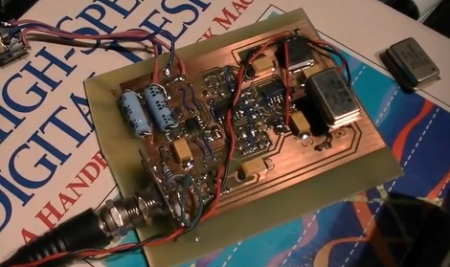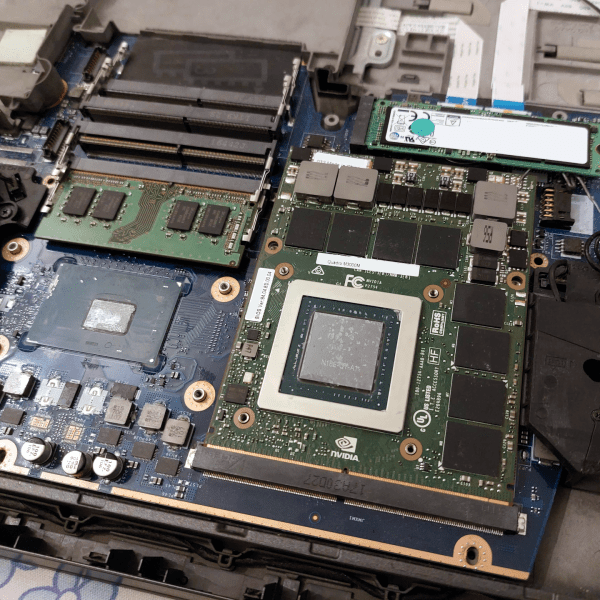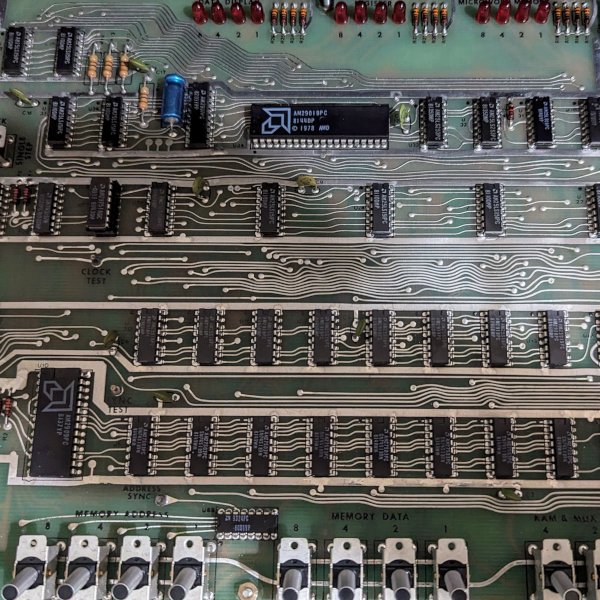[Jeri Ellsworth] has been working on a direct conversion receiver using an FPGA as an oscillator and a PC sound card DSP. Being the excellent presenter she is, she first goes through the history and theory of radio reception (fast forward to 1:30), before digging into the meat of the build (parts 2 and 3 are also available).
Instead of ‘old school’ receiving sets, the functionality of a software-based radio can be changed by just modifying the program. Building one of these receivers doesn’t use many parts, but the math and programming behind the radio can be pretty intense. Everything is fed into an off-the-shelf PC sound card for processing. The 16-bit sound card [Jeri] used covers 22kHz of radio bandwidth, but that can be increased to 48kHz with a 24-bit card.
The build itself is just a small circuit that goes between the antenna, but we have to respect [Jeri]’s ability to deal with that amount of analog madness. There’s also a great PDF on software-designed radio that [Jeri] linked to explaining everything in a non-youtube format. This receiver is pretty impressive considering we’ve come a pretty long way over the past century.

















Jeri is the best presenter IMHO!
forward on radio theory was great!
stumbled this yesterday,
http://www.elektor.com/magazines/2007/may/software-defined-radio.91527.lynkx
it wouldn’t be a bad alternative at $139. It uses a CY27EE16 in-system programmable clock from cypress instead of the fpga in jeri’s design.
Wow, as usual Jeri is THE BEST. The PDF was well written and easy to understand. This is a very interesting part of electronics that I have yet to explore.
Nice. My current project involving a radio is getting a Teensy to talk to my Icom PCR-1000 so I don’t have to have a computer available to scan my favorite frequencies which will mean I can listen to it in my car(I already have my FCC license so I’m allowed to do this, at least in the states in which I travel).
You don’t have to have ANY kind of license to listen. You only need an FCC license if you wish to transmit, whether that be AM,FM, TV, or Amateur Radio. I know this for a fact as I’ve been an SWL and Amateur Radio op for over 52 years.
Long time since you posted, but wondering if you ever setup your Icom PRC1000 with Teensy board? If so, can you give some help with your project with the Teensy and the Icom PCR1000. Also would like to run my pcr1000 without a computer.
some incredible things are possible with software radios. this type is fairly simple, yet powerful.
i can’t wait until this technology gets really inexpensive!
Check the http://www.funcubedongle.com/
Very, very awesome. The element 14 stuff can get a little annoying, but her YouTubes with all the details are true gems.
Yeah, I second that. IMHO Jeri should start her own TV show.
I had a look at the sound card chips the other day, to see if I could use one as a multichannel signal monitor.
what *doesn’t* jeri ellsworth build :D
@emilio — I just ordered a Japanese SDR from eBay for under $100. Personally looking forward to hacking up a webSDR myself.
I am sad to say that almost all RF things, especially this, goes far far over my head.
Anyone else have this problem?
“The 16-bit sound card [Jeri] used covers 22kHz of radio bandwidth, but that can be increased to 48kHz with a 24-bit card.”
Not true. I haven’t watched Jeri’s video yet, so I’m assuming this is a misunderstanding on the part of the HAD editor.
16-bit or 24-bit samples refer to the precision of each sample. This is not necessarily correlated with the sample rate.
So, to get 48khz bandwidth you need a soundcard (or really any A/D converter) that can convert up to 48khz signals. (Or do even better and get a 96khz card!) Note that this doesn’t mean the device samples at 48khz, because it would have to sample at least twice that fast.
If you get a 24-bit card you just get more accuracy along the way.
I’m excited to watch this video later. I’ve been wanting to take on a SDR project and this sounds like a good place to start.
Jerri, you so awesome. Keep being you.
Only one mistake — F connector! Eek!
Matt – You don’t need 2x the bandwidth when working with two channels(I/Q). I explain this in the video.
-Jer
Finally watched all the videos (up to part 7 on youtube, and then the element14 video too).
Very much worth the time to watch.
Worth noting that she actually uses the FPGA for signal processing later on in the project (though the summary here indicates that she only uses the PC to do DSP), with a bandwith of 176kz! I definitely have to check out the Cirrus chip she uses for A/D conversion.
Very very cool project.
I should have said you don’t need 2x sample rate when you have 2x the bandwidth with two channels (I/Q)
Jeri–
Good point. I didn’t know (prior to watching the videos) you were sampling I and Q.
Very nice work.
@Someonecool
RF isn’t difficult, you just need to spend sometime reading and playing with it. Check out your local library and see if they have a ARRL Handbook.
@xradionut
I actually bought the book a few years back, though it is the 1947 version ($1.25 when new back in the day! :P)
I think I have a flawed understanding of the electromagnetic spectrum in general or something of the sort, I cannot get around the basics of how antenna’s work even.
I think she likes to “fluff” herself up. I mean, why would you want to build a transistor when you can buy one. ANyone can research how to do it, then impress everyone with the fact that you did it. She portrays herself as an mit engineer, but there is no way to self teath yourself this stuff to the level she proclaims to be at.
@mark, I’m not sure why you believe that it’s not possible to ‘self-teach’ to PhD engineering level. The information is freely available, so all that’s required is the motivation and the intelligence to process the information.
For example, I am a top-grade engineer designing high-availability telecoms platforms and my formal education stops at high-school level.
@mark, you’ve just stated the anti-hacking manifesto in its most concise form: why build anything when you can buy it? Why learn anything when you can pay someone else to know it for you?
You also show an attitude toward ‘credentials’ versus ‘skills’ that suggests you don’t have have much in either department. Being an ‘MIT engineer’ means you sat in a certain number of rooms, passed a certain number of tests, and wrote a certain number of checks. That experience may give you a better chance of doing the same things Jeri does, but at the end of the day, performance beats pedigree every time.
FYI, most education above the BA/BS level is self-taught. Masters students spend a huge amount of time reading papers in order to get familiar with the latest information in their field. Their faculty advisers help them steer, and call bullshit when they try to handwave on things they should know, but most of the work involves being an information sponge. A PhD is self-taught by definition because it involves doing original research. No one can teach it because no one has ever studied that specific topic before.
The stuff Jeri does is masters-level work.. studying the existing literature and doing it for herself to make sure she really understands it. I don’t know what species of bug crawled up under your kilt, but it won’t do any good to tell us she can’t know what she obviously does know, or can’t do what she clearly has done.
The original Softrock radio receiver kits were ~$20US which is certainly cheap enough. Lots
of info can be found here:
http://www.wb5rvz.com/sdr/
Kit availability seems more problematic.
I refuse to run Flash, so I can’t watch the video.
I do wish there were links to things like schematics and Gerber files, but that’s a lot more work to do. And quite unreasonable if it’s a clever hack of surplus gear. In all fairness, she’s just tossing a pebble in a particular direction and leaving the viewer to take it from there.
I think Mark’s comment is quite unreasonable. Jeri’s doing techno-entertainment. There’s nothing wrong w/ that. Jeri is not a Phd level engineer and I rather doubt she’d claim she was. However, she does know what she knows and can probably beat a fair number of Phds in various areas. There are inevitably gaps in everyone’s knowledge. For the autodidact it’s a bit worse. However, as long as you’re prepared to eat failure many times, it’s not an obstacle.
Long before Jeri did it, I’d considered making a point contact transistor just for fun. It’s a neat novelty item for the living room curio cabinet. Not useful, but fun. Like my core memory or uncut IC wafer.
Some links that might be useful:
Some inexpensive (~$20US) kits in addition to more elaborate versions:
http://zao.jp/radio/order/
A general list of SDR projects:
http://www.aagneyam.com/blog/?p=1053